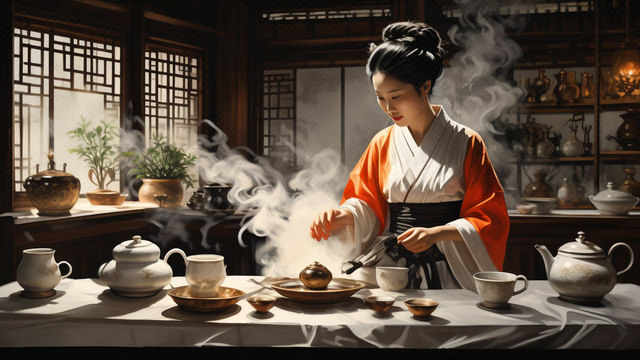
Discovering the Elegance of Chinese Oolong Tea: A Journey Through Flavor and Tradition
Introduction
Chinese Oolong tea, renowned for its rich flavor profile and aromatic qualities, occupies a special place in the world of tea. Straddling the line between green and black tea, Oolong offers a unique tasting experience that reflects its intricate production process and cultural significance. This article takes you on a journey through the history, benefits, and enjoyment of Oolong tea, inviting you to explore this exquisite beverage.
The Origins of Oolong Tea
Oolong tea, often referred to as "Wu Long" in Mandarin, translates to "Black Dragon." Hailing from China’s Fujian and Guangdong provinces, this tea has been cherished for centuries. Its origins date back to the Tang dynasty (618-907 AD), where it was first cultivated in the mountainous regions. The unique microclimates and rich soil of these areas contribute to the distinct flavors found in different varieties of Oolong.
Key Regions: Some of the most famous Oolong teas come from places like Wuyi Mountains (Da Hong Pao) and Anxi (Tie Guan Yin), each named after the region and offering its own unique taste and aroma.
The Art of Oolong Tea Production
Producing Oolong tea is an intricate process that combines natural elements with artisanal skill. The leaves are hand-picked and undergo a unique process that includes withering, oxidation, rolling, and drying. The level of oxidation can vary, creating a broad spectrum of flavors, from floral and fruity to rich and toasty.
Oxidation Levels: Oolong tea is typically partially oxidized, ranging from 10% to 80%. This process allows for a complex flavor profile that evolves with each infusion.
The Flavor Profile of Oolong Tea
Oolong tea is celebrated for its diverse flavors, which can vary significantly based on the processing method and the region of cultivation. Common flavor notes include floral, fruity, creamy, and even roasted elements.
Popular Varieties:
- Tie Guan Yin (Iron Goddess of Mercy): Known for its floral aroma and smooth, creamy taste.
- Da Hong Pao (Big Red Robe): Offers a bold, roasted flavor with a lingering sweetness.
- Milk Oolong: Renowned for its distinctive buttery and creamy flavor, often enjoyed by those new to Oolong tea.
Health Benefits of Oolong Tea
In addition to its delightful taste, Oolong tea is known for its numerous health benefits. It is rich in antioxidants, which help combat free radicals, and has been associated with improved metabolism and weight management. Regularly consuming Oolong may also promote heart health and improve skin condition.
Key Benefits:
- Antioxidant Properties: Helps reduce oxidative stress.
- Improves Metabolism: May aid in weight loss and fat burning.
- Promotes Dental Health: Contains fluoride, which can strengthen teeth.
How to Brew the Perfect Cup of Oolong Tea
Brewing Oolong tea requires attention to detail to fully appreciate its complex flavors. Here’s a simple guide to help you brew the perfect cup:
- Select Quality Tea: Choose high-quality loose leaf Oolong for the best experience.
- Use Proper Water: Opt for filtered or spring water, heated to about 90-95°C (194-203°F).
- Tea-to-Water Ratio: Use about 1 teaspoon of tea leaves for every 150ml (5 ounces) of water.
- Initial Steep: Steep for 1-3 minutes, adjusting the time based on your taste preferences.
- Multiple Infusions: Oolong can be steeped multiple times, with flavors evolving in each infusion.
Enjoying the Oolong Experience
Oolong tea is best enjoyed in a quiet setting, allowing you to savor its aroma and flavor. Pairing it with light snacks or desserts can enhance the tasting experience, making it perfect for social gatherings or quiet moments of reflection.
Conclusion
Chinese Oolong tea is a remarkable beverage that embodies centuries of tradition and culture. With its rich history, complex flavors, and numerous health benefits, it is a delightful addition to any tea lover’s collection. By exploring the world of Oolong, you not only enjoy a delicious cup of tea but also immerse yourself in a practice that has stood the test of time.
article by imageoss is licensed under CC BY-NC-ND 4.0